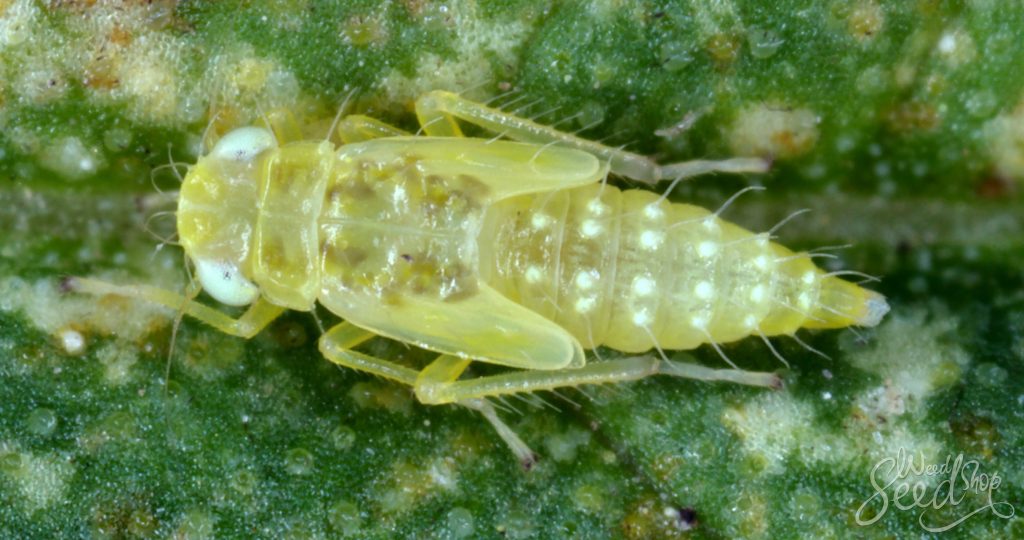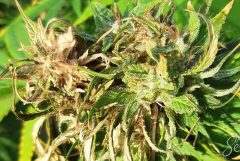Cannabis plants can be home to countless unwelcome guests and they can destroy an entire harvest in a matter of days if left unchecked. Knowing what signs to spot is just as important as knowing how to deal with the problem. Here are the things you need to look for to spot any bugs on your weed, and how to fix them.
Cannabis is a hardy plant. Its resilience and durability have made it a popular crop for thousands of years and, as we all know, these plants can put up with a lot. It truly deserves its nickname ‘weed’.
However, one of the threats that can cause the most damage in the least time is bugs. There are many bugs that love to live on cannabis plants and they can destroy an entire harvest in a matter of days if left unchecked.
What are the signs of bugs on weed?

The signs of an infestation vary depending on the kind of bug calling your plant home. Here are some of the most bugs that you might encounter, what to look for, and how to stop them.
Spider mites
These are probably the most common bug that many growers will come across—and most growers will come across these at one point or another in their careers. But just because they’re common doesn’t mean they can be ignored. Spider mites can completely devastate a grow if left unchecked.
How to spot spider mites
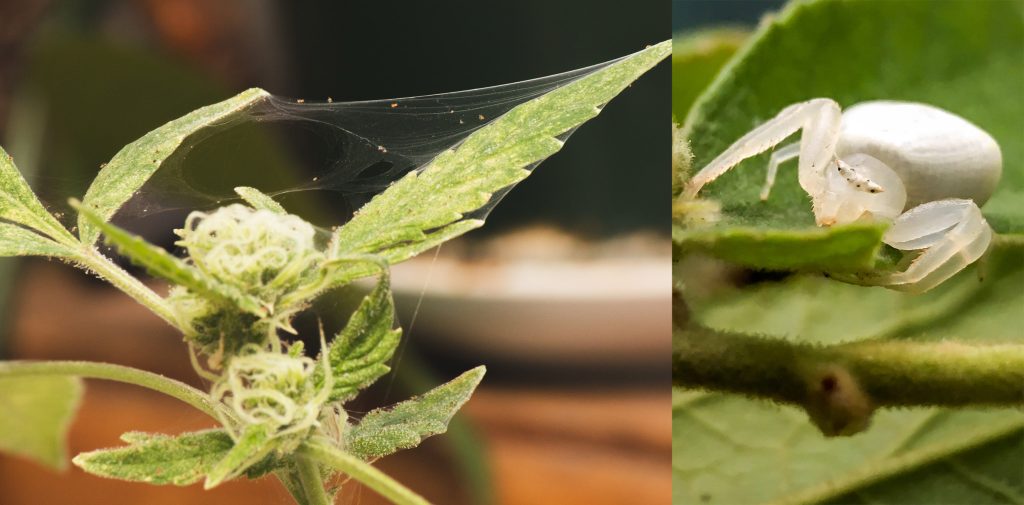
Spider mites can be incredibly hard to spot as they are only about 0.4 mm long and prefer to live on the underside of leaves. When tending to your plants, always check the bottom of leaves all around to make sure there’s nothing crawling around. It might be a good idea to use a magnifying glass if you have one around.
The tops of leaves with spider mites will show several small white spots spread across the leaf. The mites puncture the underside and drain the leaf’s juices causing small dead spots.
Spider mites are so named because they spin little webs, so if you see anything that looks like cobwebs on top of your leaves, it’s likely spider mites. If you see anything, there are more that you’re not seeing. You need to act immediately.
How to get rid of spider mites
Spider mites tend to do well in hot, dry environments. If you start seeing signs of an infestation, reduce the temperature to below 26°C (80°F) and raise the humidity above 50% (though ideally below 65%).
There are several commercial miticides available, but most are incredibly toxic and should never be used on cannabis.
There are a few ways to get rid of spider mites depending on what stage of growth your plant is in.
- Vegetation
A compound known as pyrethrum is made from chrysanthemum flowers and acts as a natural insecticide that is very effective at killing mites. To use it, just spray a solution three times a day for 5-10 days to significantly reduce or even eliminate spider mites.
Note: During the spraying process, wear a respirator as the spray should not be inhaled. The product does break down quickly afterwards, which is why it’s safe to use on weed.
- Flowering
For flowering plants, the best way to get rid of spider mites is by using insecticidal soap, horticultural oil, or neem oil. Note that while these are safe for use on flowering plants and are generally effective, we recommend avoiding their use in the final three weeks of your plant’s lifecycle. This avoids any affect in the taste of the final product.
Avoid using these products on the buds themselves as much as possible.
Aphids
Aphids, also known as greenflies or blackflies, are small, soft-bodied insects that can actually be white, green, yellow, black, brown, or red depending on their age and geography. Aphids exist all across the world and can affect plants anywhere.
How to spot aphids
Aphids’ appearance changes depending on their stage of life. Young aphids (known as nymphs) are typically white, small, and thin. Adults tend to be larger and rounder. Aphids tend to be large enough to easily see with the naked eye and any careful examination of your plants should reveal any that may be present.
Additionally, aphids secrete a substance known as honeydew that drips onto lower leaves. This sweet sticky liquid causes the growth of sooty mold which appears as black spots on the tops of leaves. If sooty mold grows on flowers, it can render the flower unsmokeable.
How to get rid of aphids
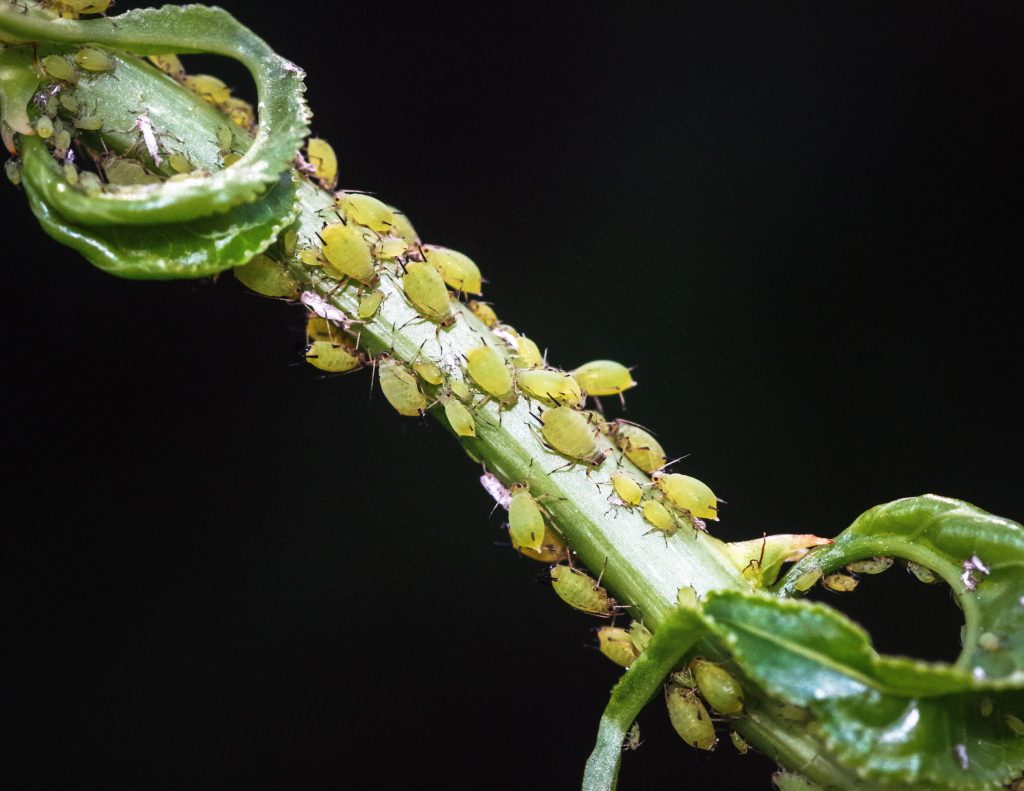
Firstly, avoid using many pesticides that are labeled for use on shade trees or ornamental plants even if they are specifically for aphid control. These include malathion, Dursban (chlorpyrifos), and Orthene (acephate). These are not safe to use on cannabis.
Instead, consider using insecticidal soap, horticultural oil, or neem oil similar to a mite infestation. Another option would be to move your plant outside (if possible) and simply spray the plant down with water to remove as many as possible.
In the very worst-case scenario, you may have to sacrifice the plant entirely to prevent the aphids from spreading, though if that is the case, your other plants are likely already infested.
Fungus gnats
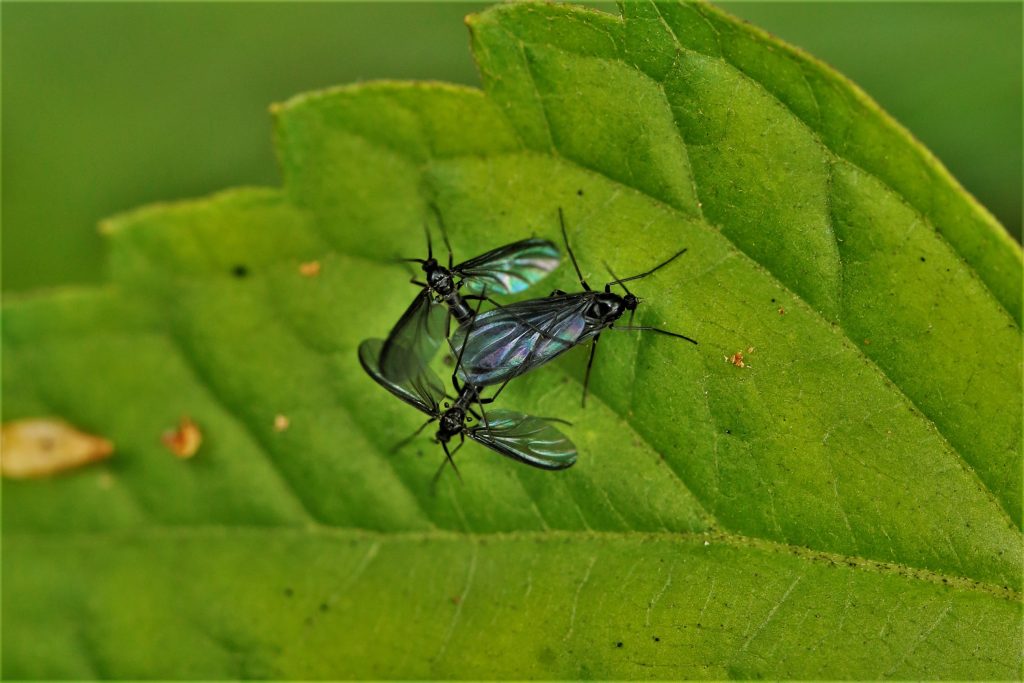
Fungus gnats are a real risk for anyone growing in soil as they lay their eggs in wet dirt and often appear when the topsoil stays wet for too long between waterings.
How to spot fungus gnats
The first sign of trouble is typically small black bugs flying around your plants and crawling on your soil. Even if your plant isn’t showing any signs of distress, if you see fungus gnats it means that you have a problem in your soil. You should also notice tiny white or translucent larvae with black heads crawling around in the soil.
These larvae are the real risk to your plants as they can damage the roots and deprive the plant of vital nutrients.
How to get rid of fungus gnats
As the name implies, fungus gnats feed on fungus that typically grows in stagnant, damp topsoil. By letting the top few centimeters of your soil completely dry out between waterings, fungus gnats commonly go away on their own. However, in extreme cases, it can take weeks of good watering practices before you get rid of them.
A great tip for any soil grower is to mix in some diatomaceous earth with your soil. This stuff is harmless to humans and animals but kills anything crawling through the soil. Another option is the naturally-occurring soil bacteria Bacillus thuringiensis which kills fungus gnat larvae and is widely available.
Thrips
Thrips are small sucking insects about the width of a needle that can cause some damage to plants. Further, they are a primary vector of plant-borne diseases.
How to spot thrips
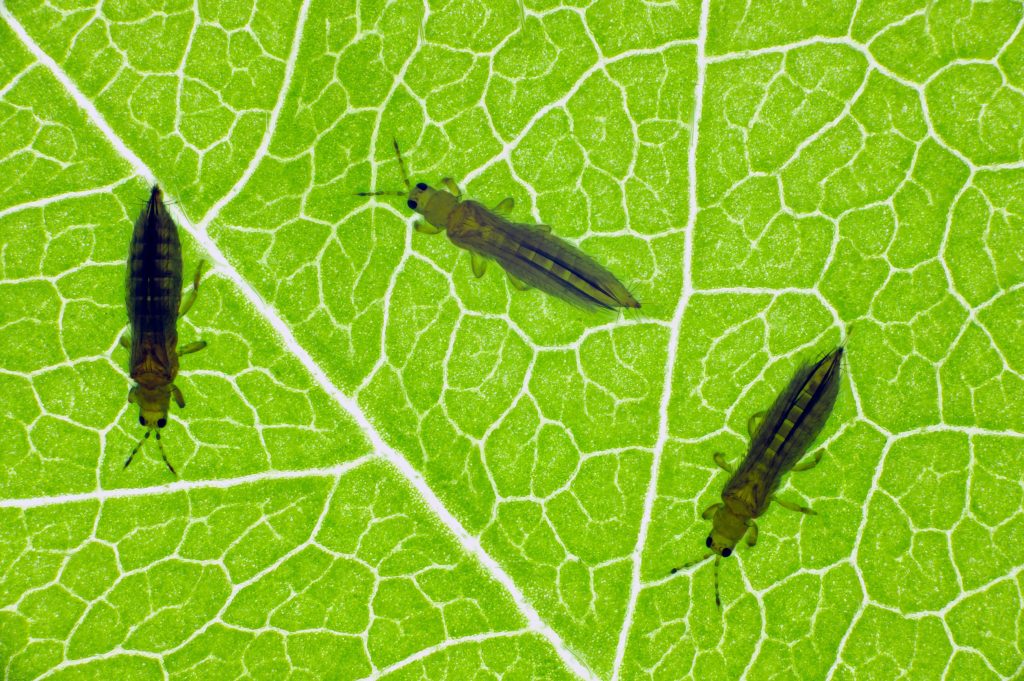
Thrips can range in color from yellow to black and have small fringed wings. They are extremely small and may be hard to spot with the naked eye. When seen, they often appear as small dark slivers on your leaves and look slightly like small lobsters.
The damage caused by thrips looks very much like the damage caused by spider mites; small white spots appearing all across the leaves, however, there will be no webbing. The damage has been described as looking like wet spit or a snail’s slime trail.
How to get rid of thrips
If you’re seeing any bugs flying around your plants, some simple flypaper will do wonders to help mitigate the damage though further intervention will likely be needed. If your plant is outdoors, a vigorous shake will remove many of them, but again, this is unlikely to be enough.
Treat a thrip infestation just like a spider mite or aphid infestation and spray your plant down with insecticidal soap or neem oil no less than 3 weeks before flowering.
Tips for preventing infestations
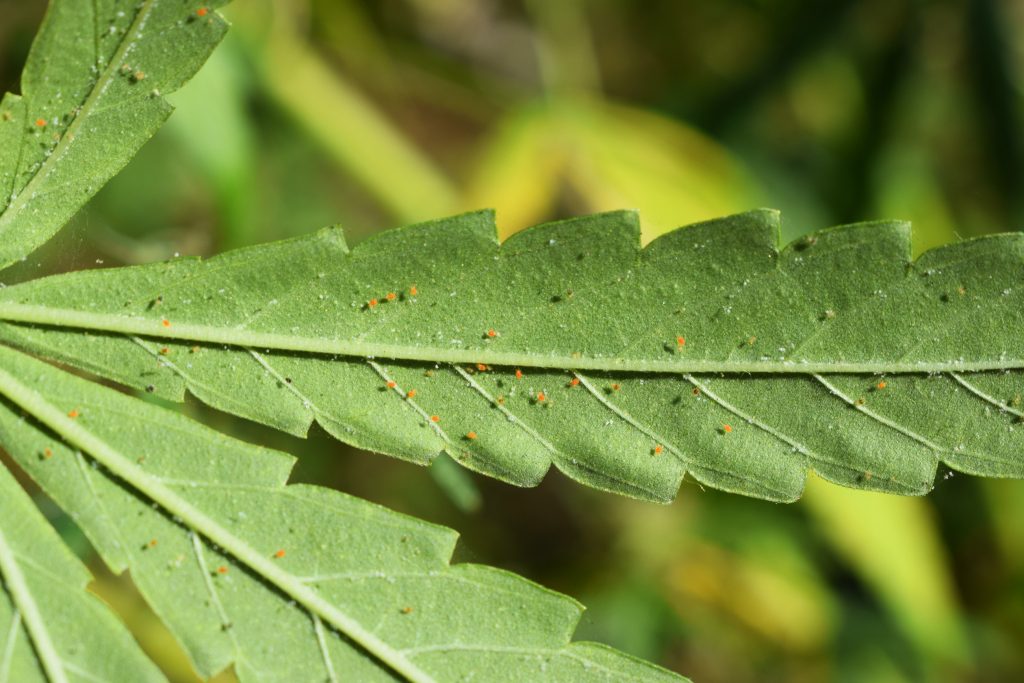
As they say, prevention is better than cure. Keeping your plants healthy and free of bugs does require a bit of diligence but it will save you a massive headache in the long run. If you want to keep your plants safe from bugs, there are a few tips you should follow. Ultimately, though, what works best for you will depend on your setup and circumstances.
- Try companion planting
Many other plants can do wonders in preventing bugs from attacking your weed. Planting other plants alongside your weed is called companion planting; these plants form companions with your cannabis plants, and together they make a great team! If you plant dill and fennel, ladybugs might arrive, which feed on aphids. Spider mites dislike rosemary and mint. The possibilities are endless!
- Pay attention
Check your plants regularly. Inspect the tops and bottoms of leaves, look at any flowers, and check the topsoil. The sooner you notice something, the sooner you can fix it. Also keep in mind that if you’re seeing one, there are more.
- Keep it clean
Keep your grow area free of any food, trash, or organic matter as these are all dinner bells for bugs. Many growers keep a separate work outfit to change into when going into their garden to avoid bringing in any extra bugs. Seems like a hassle, but sacrificing an entire crop hurts even more.
- Sticky traps
Blue and yellow flypaper will keep bugs off your plants while alerting you to any newcomers. If the paper is clean, that’s a good sign that your plants are, too.
Got any other tips or tricks for keeping your weed free from bugs? Let us know!




